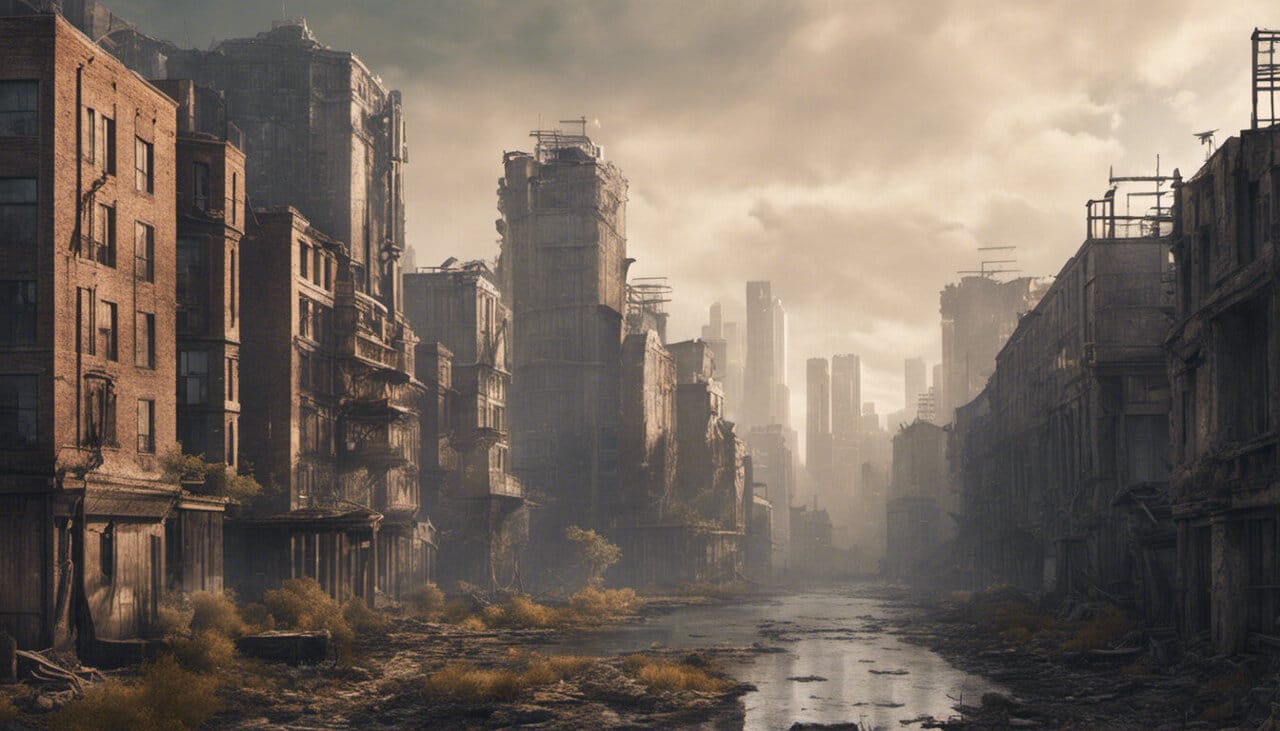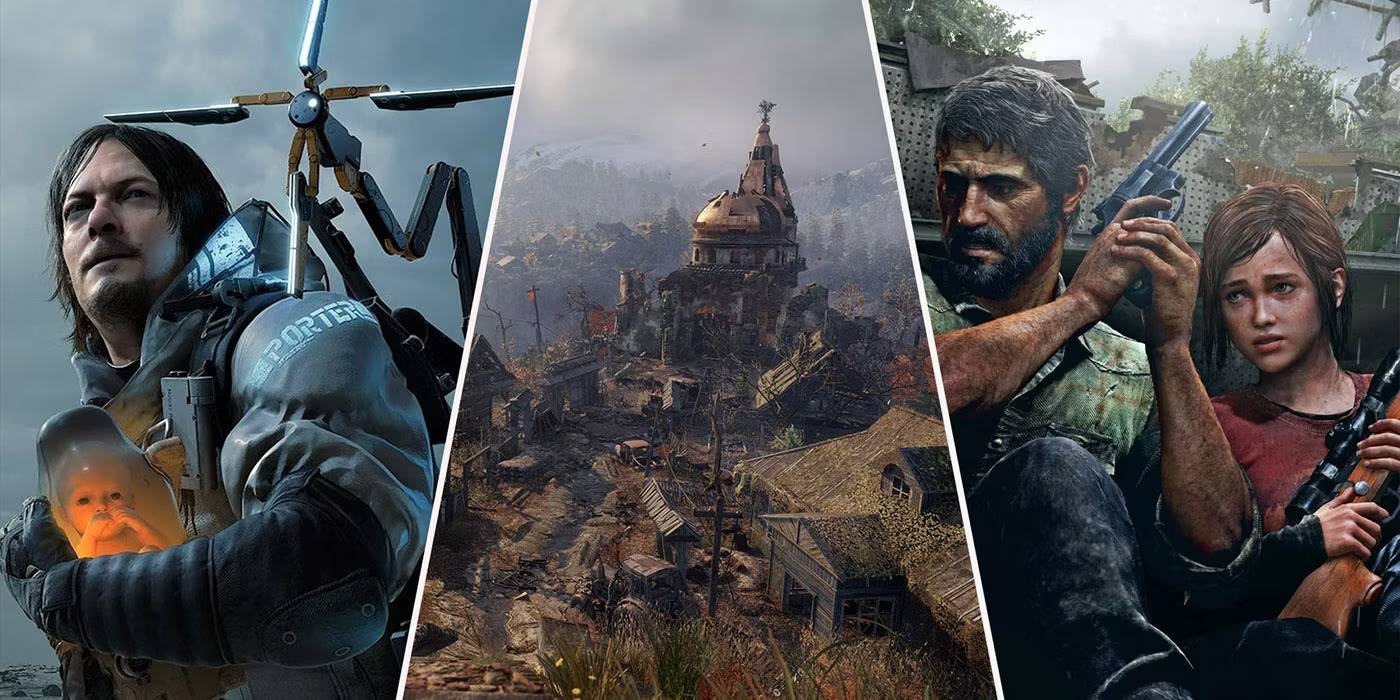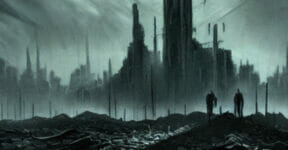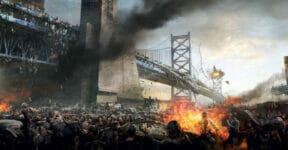For decades, the post-apocalyptic genre has captivated audiences of all ages and captured their imaginations with notions of zombies, extraterrestrial species, nuclear war, AI robots, asteroid impact, desolate worlds, and at times a biblical flood along with the Four Horsemen of the Apocalypse. From novels like I Am Legend and The Road to such films as Mad Max and The Book of Eli, the images of the end of the world have been depicted extensively in various forms and formats to the point where we almost think the end is indeed near. Even video games with a post-apocalyptic theme, for example, Fallout and The Last of Us, are becoming more popular in recent years. Each of them presents a unique fictional world to keep readers, viewers, and players engaged with a sense of wonder and fascination. One way this is done is through the map, so this blog will unveil the world of Post-Apocalyptic maps!
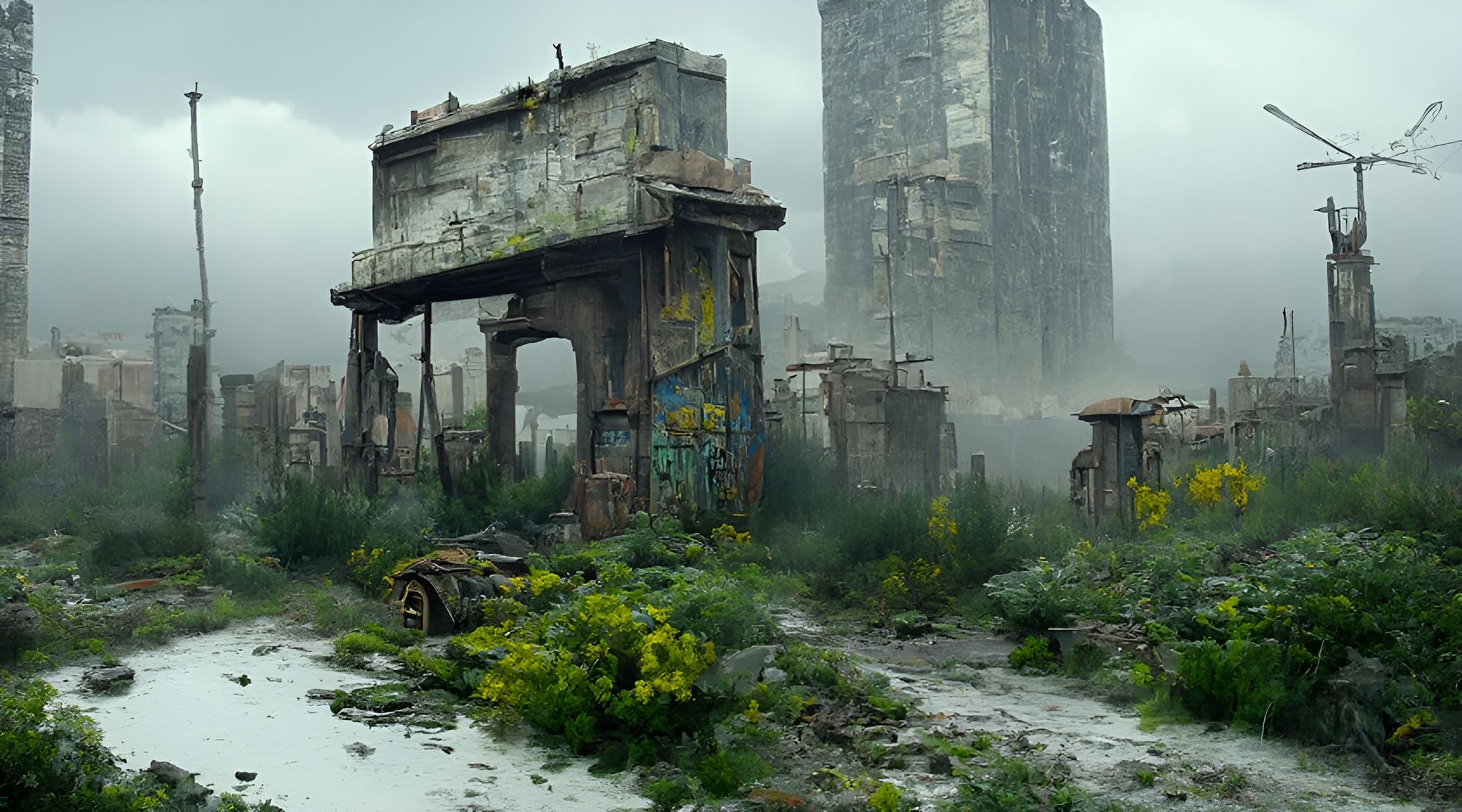
It is a bit difficult to pinpoint the exact source of the emergence of the post-apocalyptic genre. However the overall theme appears to be inspired by the general fears or anxieties surrounding the plausibility of a global catastrophe. People have different ideas about what might trigger the devastating event, for instance, climate change, another great war, alien invasion, pandemic disease, and robot apocalypse, to name a few. All those hard forebodings have been explored countless times in fantasy and science fiction, with various takes on what kind of havoc a cataclysmic disaster would wreak in its wake.
Throughout the 20th and 21st centuries, the development of nuclear weapons and the heightened public belief in alien visitation seem to dominate the post-apocalyptic genre. More recently, however, the COVID-19 pandemic has once again reminded us that human civilization is extraordinarily fragile in the face of an infectious disease. Unlike the notion of near-instantaneous devastation caused by atomic bombs or outright paralyzed infrastructures and authoritative institutions due to an electromagnetic pulse, the decimating impact of a pandemic comes with the image of a long-drawn-out demise of humanity as the population shrinks abysmally.
Sci-fi and fantasy literature create the narrative depending on the nature of the doomsday event in the first place. Accordingly, the post-apocalyptic map of the world presented in the story is pictured in a way that strengthens the plausibility and realism effect. If a story imagines the world in the aftermath of an irreversible climate catastrophe, the post-apocalyptic map would probably resemble Earth during one of its major ice ages in the past; a narrative about the human population decimated by infectious disease might come with a map consisting of empty cities in which wildlife has reclaimed the streets and buildings; seemingly endless stretches of wasteland and ruins could represent a world following nuclear onslaught.
Based on the specific timing of events in the post-apocalyptic period, the map – even the general visualization of cities and suburbs – might look no different than today’s actual locations. For instance, any particular neighborhood in a small town has not suffered much degradation during the first few months after a zombie virus outbreak. There are signs of devastation in some buildings or railway network, but it still retains many pre-apocalyptic elements such as a functioning electric grid, billboards, intact houses, and perhaps a clean water supply. Zombies are all around, but survivors can find shelter and food while trying to escape.
Map-making
The post-apocalyptic worlds depicted in World War Z, I Am Legend, and Mad Max: Fury Road are all different because each story happens in its own specific timeline. Not much of the landscape has changed in World War Z (the film) as the events are set immediately after the zombie apocalypse. While some zombies are lurking in the corners of an airfield, the main protagonist is still able to use a plane to escape an attack. Things are a little more desperate in I Am Legend because the vampirism has been going on for a while when the story starts. Images of an empty city, abandoned houses, and mutated animals do not look entirely out of place. As for the wasteland seen in Mad Max: Fury Road, it makes sense due to decades of nuclear radiation, water shortage, and pollution.
From empty desert wastelands and crumbling cities to frozen rivers and abandoned infrastructures, the post-apocalyptic genre is the perfect playground for cartographers to get creative with their visions of a destroyed world. Emerging from a devastated landscape is a chaotic mix between the remnants of civilization and how the Earth slowly nurtures and resurrects all the underlying aspects of nature.
We think a crucial part of a post-apocalyptic map, regardless of the doomsday event implied in the imagery, is a natural blend of desolate wreckage, desperation, and dreariness lightly decorated with glimpses of optimism, purpose, hopefulness, and delicate lives at the mercy of Mother Nature herself. It is always more than just about showcasing the ruins but also providing hints of survival scattered underneath the rubble. Some highways lead to dead ends, bunkersIndeed, the art of cartography in the post-apocalyptic genre is not merely a tool to depict the altered landscapes of a world ravaged by catastrophe, but also serves as a narrative device, reflecting the journey of survivors as they navigate through the remnants of civilization. As we explore the concept of post-apocalyptic maps further, we can delve into their symbolic and practical significance in shaping the stories within these desolate futures.
Symbolic Significance of Post-Apocalyptic Maps
1. Human Resilience and Adaptation: Post-apocalyptic maps often showcase the resilience of humans who have adapted to new environments. They can indicate safe zones, treacherous territories, and new settlements, symbolizing the enduring spirit of humanity in the face of adversity.
2. Loss and Nostalgia: By presenting familiar places in states of decay, these maps evoke a sense of nostalgia and loss for the world that once was. They serve as a stark reminder of the fragility of human constructs and the impermanence of our current way of life.
3. Hope for the Future: While highlighting the devastation, post-apocalyptic maps may also include signs of regrowth and renewal. The presence of green spaces, clean water sources, and burgeoning communities can inspire hope for a new beginning amidst the chaos.
Practical Significance of Post-Apocalyptic Maps
1. Survival Guide: In the context of a story, characters might rely on these maps for survival, using them to find resources, avoid danger, and locate other survivors. They become an essential tool for navigating the dangers of the new world.
2. World-Building: For creators, post-apocalyptic maps are a form of world-building that helps to establish the setting and provide a visual context for the narrative. They can aid in the creation of a believable and immersive environment for the audience.
3. Plot Development: Maps can drive the plot forward by setting goals and destinations for characters. They may be quested to reach a specific location or to discover what lies beyond the known world, adding depth and direction to the story.
Examples of Post-Apocalyptic Maps in Media
– “The Walking Dead”: Maps in this series not only show the spread of the zombie outbreak but also track the movements of the survivors as they search for safety and community.
– “A Canticle for Leibowitz”: The novel presents a world centuries after a nuclear holocaust, where the map of the world has been redrawn by the rise and fall of new civilizations that have emerged from the ruins.
– “Metro 2033”: The game and the book series use the Moscow Metro map as a basis for the new civilization that has developed underground, with each station representing a unique faction or community.
Creating Post-Apocalyptic Maps
For those interested in creating their post-apocalyptic maps, here are some tips to get started:
1. Start with Reality: Use real maps as a base and envision how natural disasters, warfare, or other apocalyptic events would alter the landscape.
2. Consider the Passage of Time: Determine how long it has been since the apocalyptic event and reflect the changes in the environment accordingly—be it overgrowth, erosion, or new waterways.
3. Add Points of Interest: Include locations that are crucial for survival, such as water sources, food supplies, or safe havens, as well as danger zones like radioactive areas or dens of hostile entities.
4. Incorporate Symbols: Use symbols to represent different aspects of the post-apocalyptic world, such as settlements, contested areas, and regions of different factions or creatures.
5. Convey Atmosphere: The style of the map should convey the atmosphere of the world—whether it’s bleak and barren or has hints of recovery and rebirth.
In summary, post-apocalyptic maps are more than mere visual aids; they are integral to the narratives of the worlds they represent. They encapsulate the trials and tribulations of the characters within these stories and serve as a canvas for the human condition, reflecting the dichotomy of despair and hope that defines the post-apocalyptic genre.
Other things you might want to know:
Are there specific rules in drawing post-apocalyptic maps?
Post-apocalyptic genre is neither confined within specific set of ideas nor fashioned to follow any particular guideline. The same thing applies to the map-making endeavor. That said, it only makes sense to build such maps in accordance to the intended premise, including time, location, and the doomsday event as well.
What do the Four Horsemen of the Apocalypse symbolize?
The first horseman, riding a white horse, is believed to personify the Antichrist; the second (red horse) represents bloodshed; the third (black horse) symbolizes famine; the fourth (pale horse) is Death.
Are there any “happy” post-apocalyptic books?
There aren’t many popular fun books in the genre, but the following titles easily come to mind:
- Grasshopper Jungle (2014) by Andrew A. Smith
- Anathem (2008) by Neal Stephenson
- Good Omens (1990) by Terry Pratchett and Neil Gaiman
- Shades of Gray (2012) by Jasper Fforde
- Warm Bodies (2010) by Isaac Marion
Check out other articles by month:

